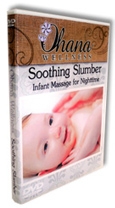 By Kathleen Mitchell-Askar, contributing editor to The Attached Family
By Kathleen Mitchell-Askar, contributing editor to The Attached Family
When I was pregnant with my first child, I wrote in my journal nearly every day about what I felt and the changes I was experiencing. Once a week, I went to a prenatal yoga class and I listened to special meditations to connect with my baby. If I wasn’t at work or caring for the home, I used to just lie down and feel my baby sweep her elbows and knees across my belly.
Pregnancy with my second child brought an entirely different experience. In nine months, I went to one yoga class, took my older child to my prenatal visits with me, and had an extra set of hands on my belly whenever the baby kicked. And while I enjoyed the few moments before I slept, feeling the baby alone, my prime focus during pregnancy was to prepare my older child for the arrival of a new sibling.
Knowing that the nine months of pregnancy before baby’s arrival would be my last nine months of parenting a single child, I tried, like all mothers of second babies, to include my older child in preparations for the baby in a way that made her feel valuable and important.
When parents find out they will be expecting a second child, they often wonder when and how to tell their first. Experts agree that the way in which parents tell their older child the news depends on the child’s age. The nine months before baby’s arrival may be an abstract idea for a younger child that doesn’t quite understand time; in this case, it sometimes helps to connect the birth to a holiday near which the baby should arrive.
A preschooler or kindergarten-aged child is bound to ask where babies come from. A child this age doesn’t necessarily want to know about sex but about where in the body the baby literally comes from. “The baby comes from the mommy’s uterus,” might be a good answer, especially if a parent has access to a developmentally appropriate, illustrated book about the body. A family’s religious or other values might lead to another response entirely; what matters most is that the answer be respectful and genuine.
When parents decide to tell their child about the new baby may depend on a past history of miscarriage. Some families may decide to wait until the second trimester, while others may not be able to contain their excitement and decide to tell their older child immediately.
During pregnancy, maintaining a strong bond with the older child is crucial. It may seem like everybody outside the home is focused on the mother’s belly and will constantly ask the older child what he thinks about having a new baby brother or sister, which may make the older child feel excluded or replaced. To keep an older child feeling important, spend ample time focused on him as an individual, rather than as a big brother-to-be. Spend time each day doing activities the child enjoys, like trips to the park or pool, family game time, and art projects. By allowing an older child to have time with Mom and Dad, doing the things he enjoys without talking about the baby, parents will maintain their child’s sense of his vital and valuable role in the family.
To lay the foundation for a loving relationship between siblings, parents can include their older child in preparations for the baby. Kids may have fun choosing potential names for the baby, picking out furniture and clothing, and helping assemble toys and furniture.
In order to prepare an older child for the shift to life with an infant, parents and their older children can look through pictures of the older child as a baby or go through her baby book. Talk to the child about special memories, silly things he did or said as a baby, how happy his mother and father were and still are to have him. It may also make the transition easier if parents talk about the attention a new baby needs, and if parents show pictures of the older child as a baby having a bath or snuggling with Mom or Dad, she can see how fun and tender life with a new baby can be.
Most bookstores and libraries have books about becoming a big brother or sister that can help a child understand what he or she can expect, such as The Big Sibling Book: Baby’s First Year According to ME by Amy Krouse Rosenthal, The Berenstain Bears’ New Baby or The Berenstain Bears Baby Makes Five by Stan Berenstain and Jan Berenstain, and Julius, the Baby of the World by Kevin Henkes. There are also big-brother and big-sister journals in which the child can draw pictures for his sibling and record his hopes for the fun games they can play together and what he wants to teach his little brother or sister to do. Kids may even enjoy assembling their own journals or scrapbooks from scratch.
Once the baby arrives, older siblings often enjoy helping to change diapers and give baths. Other children may prefer to have their own “baby,” a doll or animal that they diaper, bathe, and carry in a sling. There will, of course, be times when the older child asks Mom or Dad for something when the parent must feed the baby or change a particularly dirty diaper. At these times, parents should avoid saying that they will help the older child after they have helped the baby; instead, something like, “When I have a free hand in just a minute, I will help you,” may prove a more acceptable answer to an anxious older child.
There will be times, too, when the family must wait for the baby to wake up before going on an outing. In this case, blame the wait on an expected phone call or urgent load of laundry rather than on the baby’s nap. In the meantime, play a game the child enjoys, draw a picture, or bake cookies; after all, naptime may be the only time of day when an older child can have Mom or Dad all to herself.
Many parents of only children wear the baby in a sling to keep the baby close and content. When parenting an older child and a younger one, wearing a sling or carrier becomes all the more essential, because the parent can then have her hands free to push the older child on the swing or help him tie his shoes. And having children who feel happy and loved is all a parent can ask for.
 There is a fine line between physical punishment and child abuse, at least as the law sees it. Just where does the line lie between the two? Most people who use physical punishment will tell you that spanking, whether with the hand or another object, is considered safe if not done in anger or excessively. But it’s a lot more complicated than that. The law protects adults from assault – otherwise known as hitting – even in prisons, which are clearly meant to be a punishment. Why not the same for children?
There is a fine line between physical punishment and child abuse, at least as the law sees it. Just where does the line lie between the two? Most people who use physical punishment will tell you that spanking, whether with the hand or another object, is considered safe if not done in anger or excessively. But it’s a lot more complicated than that. The law protects adults from assault – otherwise known as hitting – even in prisons, which are clearly meant to be a punishment. Why not the same for children?





